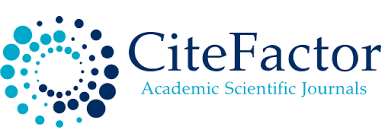Effects of Fritted Dental Porcelain Particles on Tensile and Flexural Properties of Poly Methylmethacrylate Matrix
DOI:
https://doi.org/10.26719/LJM18-2.10Keywords:
PMMA, Filler, Reinforcement, Tensile, Flexural, PropertiesAbstract
Purpose: The aim of this study was to assess influence of varying concentrations of fritted dental porcelain (FDP)
particles, at levels of 5, 10, and 15 wt.%, as reinforcement material on the mechanical properties of poly
methylmethacrylate (PMMA) matrix.
Methods: An array of methodologies was employed to analyze the raw materials associated with the preparation of FDP.
Specimens of tests were created and classified into four groups according to FDP particles concentration into PMMA
matrix to assess both tensile and flexural properties. The control group was composed of PMMA matrix containing 0 wt.%
of FDP particles. The flexural testing was conducted in compliance with ASTM D790-86 using a three-point bending test
machine, whereas the tensile testing was conducted in accordance with the specifications of ASTM D638.
Results: The results demonstrate that as FDP particles concentrations increased into PMMA matrix as tensile modulus
and flexural modulus values increased, while simultaneously, the tensile strength and flexural strength values decreased as
FDP particles concentrations increased into PMMA matrix.
Conclusions: Among various concentrations of FDP examined, the addition of a low concentration (5 wt.%) of FDP
particles to the PMMA matrix is found to be the most effective in augmenting the mechanical properties of PMMA matrix.
References
Alqutaibi A Y, Baik A, Almuzaini S A, Farghal A E, Alnazzawi A A, Borzangy S, Aboalrejal A N, AbdElaziz M H, Mahmoud I I, Zafar M S. Polymeric denture base materials: a review. Polymers. 2023;15(15), 3258.
Nabhan A, Taha M, Ghazaly N M. Filler loading effect of Al2O3/TiO2 nanoparticles on physical and mechanical characteristics of dental base composite (PMMA). Polymer Testing. 2023;117(107848.
Fouda S M, Gad M M, Ellakany P, A. Al Ghamdi M, Khan S Q, Akhtar S, Ali M S, Al-Harbi F A. Flexural properties, impact strength, and hardness of nanodiamond-modified pmma denture base resin. International Journal of Biomaterials. 2022;2022(1), 6583084.
Rohim M, El-Sheikh M, Ali W, Hassan A E-S M. Effect of Al2O3 nanowires and ZrO2 nanoparticles addition on the mechanical and tribological properties of heat-cured PMMA acrylic denture base material. high Temp. 2021;24(7), 12171-12181.
Earar K, Solomon O, Topor G, Constantin I, Beznea A, Ciprian D, Anghel L, Ștefănescu V, Fotea S L, Feier R D. Comparison study on the influence of Al2O3 Nanoparticle size and ternary hybrid on several properties of a PMMA denture composite. Materiale Plastice. 2021;58(2), 119-129.
Fouly A, Ibrahim A M M, Sherif E-S M, FathEl-Bab A M, Badran A H. Effect of low hydroxyapatite loading fraction on the mechanical and tribological characteristics of poly (methyl methacrylate) nanocomposites for dentures. Polymers. 2021;13(6), 857.
Elkhouly H I, Ali E M, El-Sheikh M, Hassan A E-S M. An investigated organic and inorganic reinforcement as an effective economical filler of poly (methyl methacrylate) nanocomposites. Scientific Reports. 2022;12(1), 16416.
Mohammed A F, Almohaisen A M N, Hassan K S. Mechanical properties of hybrid composites PMMA denture base with varying concentrations of Nano-ZrO2 and glass fiber. Key Engineering Materials. 2022;937,107-117.
Ibsen R L, Chadwick T C, Pritchard S A. Strong dental porcelain and method for its manufacture. In: Den-Mat Corporation, Santa Maria, Calif.1991.
Oleiwi J K, Hamad Q A. Studying the mechanical properties of denture base materials fabricated from polymer composite materials. Al-Khwarizmi Engineering Journal. 2018;14(3), 100-111.
Oleiwi J K, Hamad Q A, Rahman H J A. Tensile properties and morphological test of heat cured acrylic resin reinforced by natural powders. International journal of mechanical production engineering research development. 2018;8(6), 325-334.
Dimitrova M, Corsalini M, Kazakova R, Vlahova A, Chuchulska B, Barile G, Capodiferro S, Kazakov S. Comparison between conventional PMMA and 3D printed resins for denture bases: A narrative review. Journal of Composites Science. 2022;6(1-13.
Zare Y, Munir M T, Rhee K Y. A novel technique including two steps for modulus prediction in polymer halloysite nanotube composites. Scientific Reports. 2024;14(1), 20511.
Elboraey A N, Dehis W M, Mousa M K. Flexural and tensile strength of acrylic resin denture base materials processed by three different methods. Research journal of pharmaceutical biological chemical sciences. 2016;7(4), 2556-2563.
Sadeq H M, Salih S I, Braihi A J. Development on mechanical properties of PMMA by blending it with natural rubber or silicone rubber and reinforced by nanoparticle. International journal of nanoelectronics and materials. 2020;13(1), 131-144.
Ghaffari T, Hamedirad F, Ezzati B. In vitro comparison of compressive and tensile strengths ofacrylic resins reinforced by silver nanoparticles at 2% and0. 2% concentrations. Journal of dental research, dental clinics, dental prospects. 2014;8(4), 204-209.
Kundie F, Azhari C H, Ahmad Z A. Effect of nano-and micro-alumina fillers on some properties of poly (methyl methacrylate) denture base composites. Journal of the Serbian Chemical Society. 2018;83(1), 75-91.
Alsharif S O, Akil H M, Abd-Elaziz N A, Ahmad Z A. Effect of alumina particles loading on the mechanical properties of light-cured dental resin composites. Materials and Design. 2014;54(430-435.
Nazirkar G, Bhanushali S, Singh S, Pattanaik B, Raj N. Effect of anatase titanium dioxide nanoparticles on the flexural strength of heat cured poly methyl methacrylate resins: an in-vitro study. The journal of indian prosthodontic society. 2014;14(Suppl 1), 144-149.
Aldegheishem A, AlDeeb M, Al-Ahdal K, Helmi M, Alsagob E I. Influence of reinforcing agents on the mechanical properties of denture base resin: A systematic review. Polymers. 2021;13(18), 3083
Downloads
Published
Issue
Section
License
Copyright (c) 2024 Saad Omar Alsharif, Asam M. A. Abudalazez, Zainal Arifin Ahmad (Author)

This work is licensed under a Creative Commons Attribution-NonCommercial-NoDerivatives 4.0 International License.











